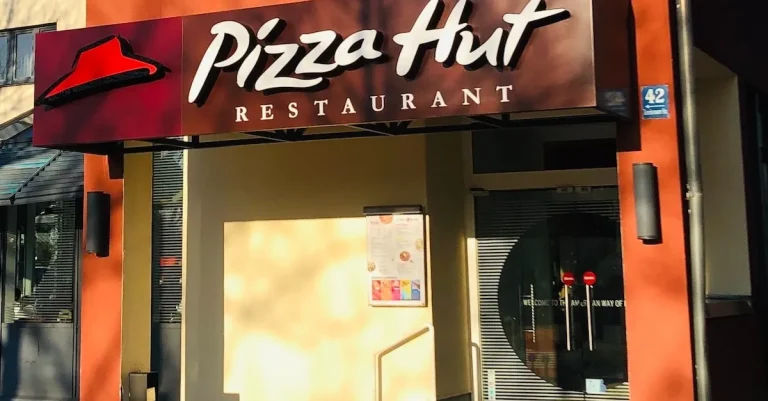How Much Are Food Stamps Worth In Cash?
With grocery prices on the rise, you may be wondering if you’d get more value by converting your food stamps to cash. This is an understandable question given how SNAP benefits work, but the short answer is: you can’t convert food stamps into cash.
In this comprehensive guide, we’ll explain everything you need to know about the cash value of SNAP benefits, including how the program works, what you can buy with food stamps, and why they can’t be exchanged for cash.
How the SNAP Program Works
The Supplemental Nutrition Assistance Program (SNAP) is a federal assistance program designed to help low-income individuals and families afford nutritious food. Formerly known as food stamps, SNAP provides eligible individuals with funds to purchase groceries. Here’s how the program works:
SNAP stands for the Supplemental Nutrition Assistance Program
SNAP, formerly known as the Food Stamp Program, is administered by the United States Department of Agriculture (USDA). It’s the largest federal nutrition assistance program in the country, serving millions of individuals and families in need.
It’s intended to supplement a food budget, not provide 100% of food costs
It’s important to note that SNAP benefits are not designed to cover the entire cost of a person’s food expenses.
Instead, they are meant to supplement a household’s food budget. SNAP is intended to help individuals and families stretch their food dollars and ensure they have access to nutritious meals.
Benefits are loaded onto an EBT card each month
Once approved for SNAP benefits, recipients are issued an Electronic Benefit Transfer (EBT) card. Similar to a debit card, this card is loaded with funds each month.
Recipients can use their EBT cards to purchase eligible food items at authorized retailers, including grocery stores, supermarkets, and farmers markets.
The average SNAP recipient gets $126 per month
The amount of SNAP benefits a household receives is determined by several factors, including income, household size, and expenses. On average, SNAP recipients receive about $121 per month.
However, it’s important to note that benefit amounts can vary depending on individual circumstances.
What You Can Buy With SNAP Benefits
SNAP benefits, also known as food stamps, provide assistance to low-income individuals and families to purchase food. These benefits can be used to buy a variety of grocery items, ensuring that individuals have access to nutritious food options. Here is a breakdown of what you can buy with SNAP benefits:
Most grocery foods are eligible, like bread, fruits, vegetables, meat, eggs
One of the great advantages of SNAP benefits is that they can be used to purchase a wide range of grocery foods.
This includes essential items such as bread, fruits, vegetables, meat, and eggs. Individuals and families can use their benefits to ensure that they have access to the necessary ingredients for a balanced and healthy diet.
It’s important to note that SNAP benefits cannot be used to purchase prepared foods or hot meals from restaurants.
Some non-food items like seeds and plants for growing food
In addition to grocery foods, SNAP benefits can also be used to buy non-food items that contribute to the production of food.
This includes seeds and plants that can be used for gardening and growing your own fruits and vegetables. By allowing the purchase of these items, SNAP benefits encourage self-sufficiency and empower individuals to cultivate their own food sources.
Anything pre-made that will be eaten at home, like deli foods
While SNAP benefits cannot be used to buy prepared foods or hot meals from restaurants, they can be used to purchase pre-made foods that are intended to be eaten at home.
This includes items from the deli section of grocery stores, such as pre-packaged salads, sandwiches, and other ready-to-eat meals. Individuals can enjoy the convenience of these options while still staying within the guidelines of their SNAP benefits.
Bottled water, soda, snack foods, candy are allowed
Contrary to popular belief, SNAP benefits can be used to purchase certain beverages and snack foods. This includes bottled water, soda, and a variety of snack items.
While these items may not be considered essential for a healthy diet, they are allowed under the SNAP program. It’s important to strike a balance and prioritize nutritious options while making use of these benefits.
What You Can’t Buy With Food Stamps
Prepared hot foods or foods intended to be eaten in-store
When it comes to using food stamps, there are certain restrictions on what you can purchase. One of the things you can’t buy with food stamps are prepared hot foods or foods intended to be eaten in-store.
This means that you won’t be able to use your food stamps to buy that delicious rotisserie chicken from the supermarket or grab a hot slice of pizza from the deli counter.
The aim of this restriction is to ensure that food stamps are used for purchasing groceries that can be taken home and prepared by the recipient.
It also helps prevent abuse of the system, as it ensures that food stamps are used for their intended purpose of providing individuals and families with the means to buy nutritious food.
Non-food items like pet food, household supplies, hygiene items
Another restriction on food stamps is that they cannot be used to purchase non-food items such as pet food, household supplies, or hygiene items.
While these items are essential for daily life, the focus of food stamps is on providing individuals and families with the means to buy food. This restriction helps ensure that the limited resources allocated for food assistance are used solely for their intended purpose.
However, it’s worth noting that some states have separate assistance programs for low-income individuals and families who need help with purchasing non-food items.
Vitamins, medicines, supplements
Food stamps also cannot be used to purchase vitamins, medicines, or supplements. These items are considered non-food items and are not eligible for purchase with food stamps.
However, it’s important to note that individuals who receive food stamps may still be eligible for other forms of assistance, such as Medicaid or Medicare, which can help cover the cost of medications and medical supplies.
Alcoholic beverages, tobacco
Lastly, it is important to highlight that food stamps cannot be used to purchase alcoholic beverages or tobacco products.
The aim of the Supplemental Nutrition Assistance Program (SNAP), which provides food stamps, is to ensure that individuals and families have access to nutritious food.
Allowing the purchase of alcoholic beverages or tobacco would contradict this goal. Additionally, research has shown the negative health effects of tobacco and excessive alcohol consumption, so it makes sense to restrict the use of food stamps for these items.
It’s important to be aware of these restrictions when using food stamps. Understanding what you can and cannot buy with food stamps will help you make the most of the assistance provided and ensure that you are using the benefits appropriately.
Why SNAP Benefits Can’t Be Exchanged for Cash
SNAP benefits, also known as food stamps, are specifically designed to assist low-income individuals and families in purchasing nutritious food.
These benefits are provided by the Supplemental Nutrition Assistance Program (SNAP), a federal assistance program administered by the United States Department of Agriculture (USDA).
It would undermine the purpose of SNAP – to supplement grocery costs
The primary goal of SNAP is to supplement the grocery costs of eligible individuals and families, ensuring that they have access to enough food to meet their nutritional needs.
Allowing SNAP benefits to be exchanged for cash would defeat this purpose, as it would enable recipients to use the funds for purposes other than purchasing food.
The program is carefully structured to support food security, and allowing cash exchanges could lead to recipients not having enough funds to meet their essential food needs.
Opens the door to SNAP benefits being used for non-food items
SNAP benefits are intended to be used exclusively for the purchase of food items.
By allowing the conversion of benefits into cash, there is a risk that recipients may use the funds for non-food items, such as alcohol, tobacco, or other non-essential items. This would deviate from the program’s intended purpose of ensuring access to a healthy and balanced diet.
Increases potential for fraudulent activities
By restricting SNAP benefits to the purchase of food items, the government can better prevent fraud and misuse of funds. Allowing benefits to be exchanged for cash would create opportunities for fraudulent activities, such as recipients selling their benefits to others for less than face value.
This would not only undermine the effectiveness of the program but also compromise the support provided to those in need.
It is important to note that SNAP benefits are not the only form of assistance available to low-income individuals and families. There are various other programs and resources, such as cash assistance programs and community support services, that can help address different needs beyond the scope of SNAP.
Conclusion
While it may be tempting to want to convert food stamps into cash, SNAP was designed solely as a supplemental nutrition program. Exchanging benefits for cash would undermine that purpose and make the program more difficult to monitor. The best use of food stamps is sticking to groceries and getting the most nutrition per dollar.
If your food stamp allotment doesn’t seem like enough to meet your monthly food needs, look into resources in your area like food banks and meal programs. With a mix of SNAP and other resources, you can get the food your household requires.








